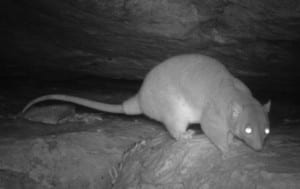Specimen of the week 339: The St Kilda mice
By ucwehlc, on 20 April 2018
Our specimens this week might be small, but they are giants of their species because of the peculiar effects of living on an island. They are…
 Close
Close
News and musings from the UCL Culture team

By ucwehlc, on 20 April 2018
Our specimens this week might be small, but they are giants of their species because of the peculiar effects of living on an island. They are…
By Jack Ashby, on 15 December 2017
One of the most extraordinary collections in the Grant Museum relates to one of the most Ordinary of Animals. Since its creation, it has been kept behind the scenes. The man who created it, over decades of barely believable dedication and hard work, would probably never have imagined that anyone would firstly want to display it, and secondly find a way to do so.
Personally, I have a real interest in pondering the differences between what gets selected for display in museums and what doesn’t (I published an article in The Conversation about it this week), and in the Grant Museum we have a lot of experience of finding ways to display collections that were not intended for the public eye (our Micrarium is a great example of this). This week’s Specimen of the Week definitely fits these themes… (more…)
By Jack Ashby, on 11 March 2016
It is purely coincidence that Specimen of the Week 230 – the number most associated with going to the dentist [tooth hurty. Apologies.] – is an animal famous for the incredible feats of its teeth.
Beavers can cut down huge trees, owing to the superb adaptations of their skulls.
As members of the squirrel-like rodent group Sciuromorpha, beavers have massive, ever-growing, self-sharpening front teeth. Rodent incisors are often differently coloured on the front and back. The orange substance on the front side is super hard enamel, while the back is unusually exposed dentine (a softer material which fills the inside in most teeth). When rodents bite on hard material, or even by biting their top teeth against their bottom teeth, the dentine erodes away at a faster rate than the enamel, essentially sharping the “blade”. (more…)
By Jack Ashby, on 11 December 2014

A scaly-tailed possum caught on a camera trap
in AWC’s Artesian Range.
(C) Australian Wildlife Conservancy,
Over the past few years I have been spending my spare time in a remote area of the Kimberley, on the northwest corner of Australia, helping a conservation NGO – the Australian Wildlife Conservancy (AWC) – to do ecological fieldwork. AWC are Australia’s largest private owner of land for conservation, and their mission is to manage it based on scientific research. In the northwest their big long-term projects involve determining the effects of cattle and different fire management practices on tropical savannah ecosystems. And in my most recent two trips I’ve been lucky enough to be involved in the detection of super-scarce species in extremely remote pockets of rainforest and monsoonal woodland.
A few years ago AWC acquired an amazing patch of the Kimberley called Artesian Range – monsoonal savannah criss-crossed with sandstone ranges, gorges of vine-thickets and rainforest pockets. I remember going through the first set of remote camera trap images that came back from Artestian in 2011 and being amazed at the species that were being detected.
It seems that Artesian Range is the only place in mainland Australia not to have suffered any mammal extinctions since European colonisation. A community of amazing endemics has clung on – scaly-tailed possums, golden-backed tree rats, monjons, golden bandicoots and Kimberley rock rats. When I was analyzing those camera trap images in 2011 I was a couple of hundred kilometres south of Artesian, on AWC Northwest’s main home sanctuary, Mornington. Artesian Range is in one of the least accessible parts of Australia, requiring a combination of propeller-plane, serious 4WD and helicopter to get to. As amazing as it was to see these species on the screen, I instantly knew I had to go and see them in the flesh. For me, the scaly-tailed possum had become the holy grail.
(more…)
By Jack Ashby, on 31 July 2013
Book Worm is our occasional series for reviewing books. Today I bring you my thoughts on William Stolzenburg’s Rat Island published by Bloomsbury in 2011.
When I was about 13 I read David Quammen’s Song of the Dodo. His telling of the history of island biogeography through the prism of extinction was a great influence on my becoming a biologist. When I came across Rat Island: Predators in Paradise and the World’s Greatest Wildlife Rescue I was thrilled to return to where Quammen left off.
According to Stolzenburg, islands harbour 20% of terrestrial biodiversity on just 5% of the land (read Song of the Dodo to learn why). They also account for nearly half of the world’s critically endangered species. One of the main reasons is the damaged caused by introduced species, most notably rats. (more…)